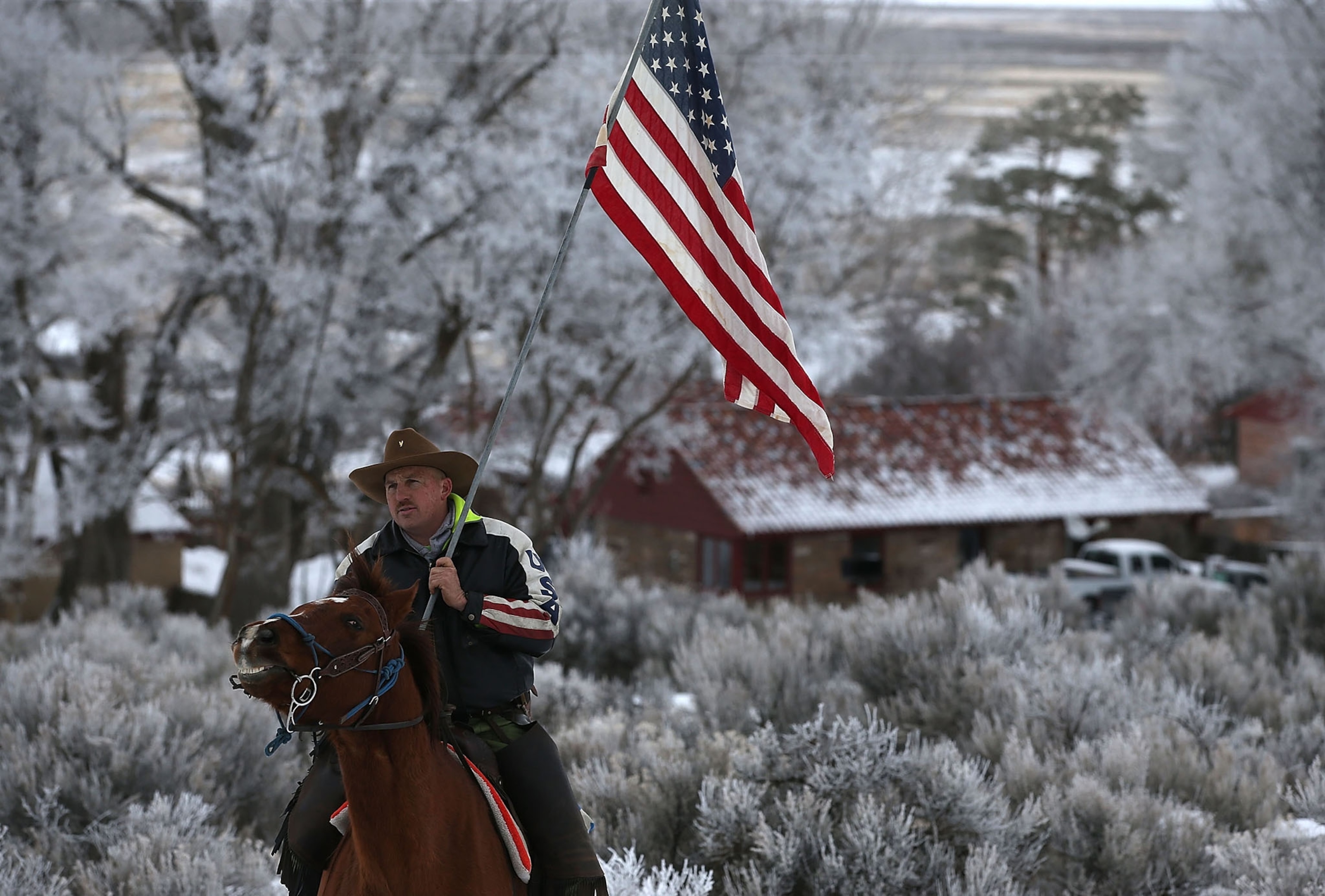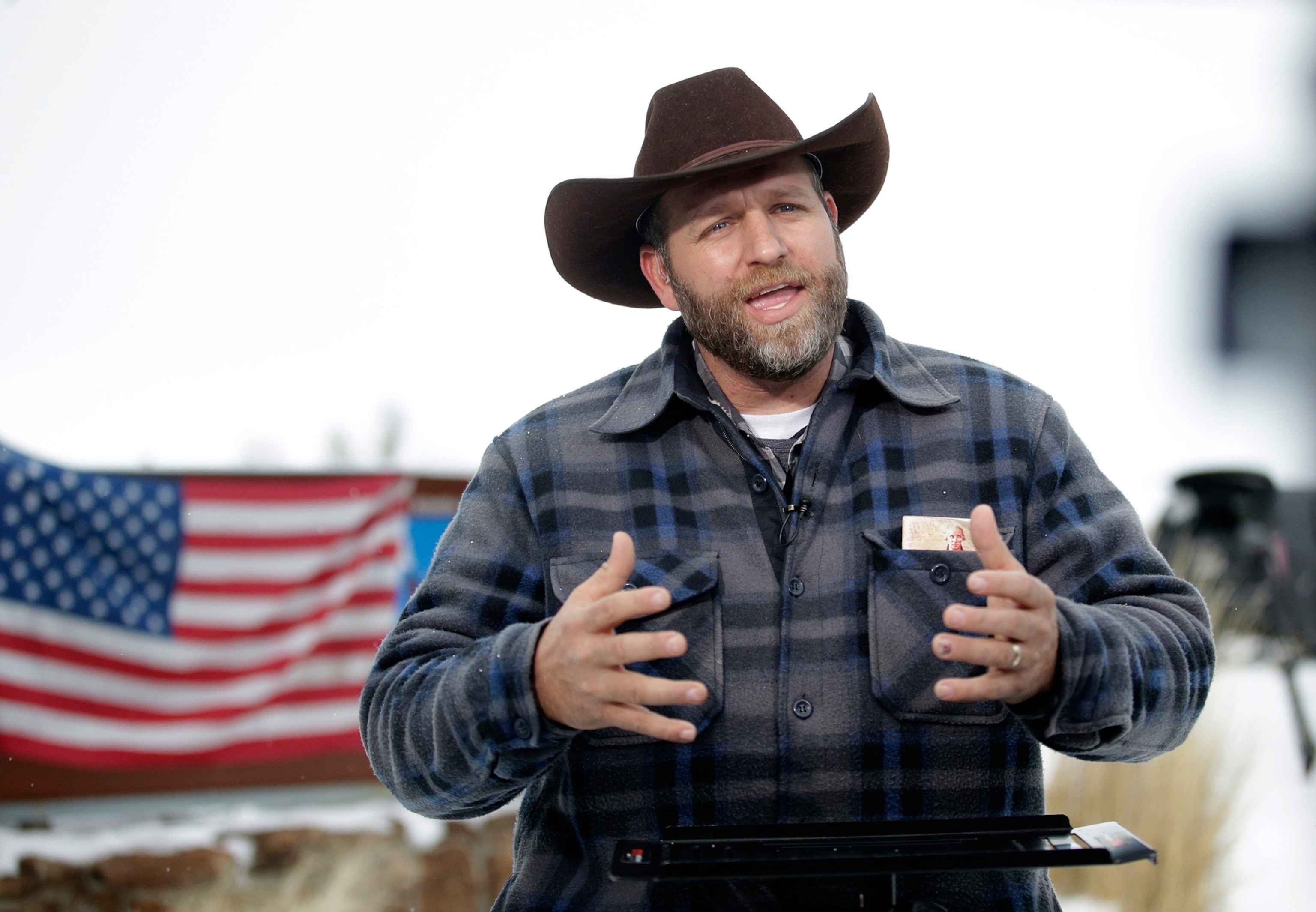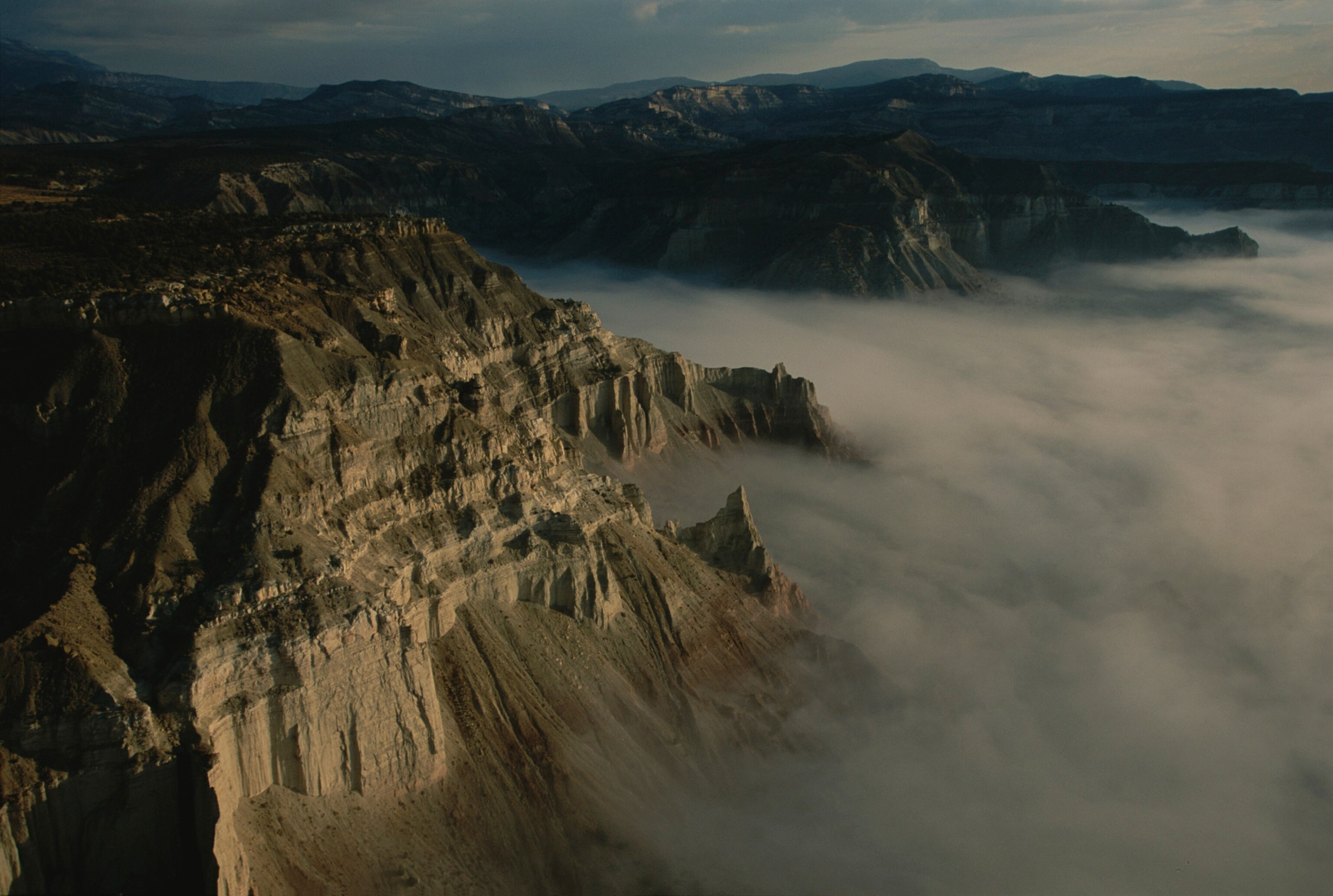
Tracing the Deep Roots of the Oregon Occupation
The beliefs at the heart of the situation aren't that unusual in parts of the American West.
Nobody expects militants to take over vacant government buildings, but there they were—20 or so armed men from Idaho, Montana, Utah, and adjacent states seizing the headquarters of the Malheur Wildlife Refuge in eastern Oregon in early January.
They were led by Ammon Bundy, son of the Nevada rancher Cliven Bundy, who participated in an armed standoff with federal authorities in 2014 to successfully avoid paying $1 million in grazing fees.
The occupiers say they won’t leave until their demands are met. They want the refuge and other federal lands to be turned over to local residents to use “without fear … as free men.” And they insist the United States doesn’t have the constitutional right to own the land, even though federal courts long ago rejected this position.
At first glance, those demands (and the reasoning behind them) may seem pretty strange. But for the region, these arguments are not unusual. Indeed, they’ve long been articulated at high levels of government. In this expanse of the country, Bundyism isn’t a fringe ideology, it’s part of a longstanding political tradition.
Parks, Protection, and Protests
The expanse I’m referring to is east of the Sierra and coastal mountain ranges, and west of the 100th meridian, which divides the Dakotas roughly in half and continues southward.
Ranchers and logging interests in this region have lobbied to privatize or radically deregulate federal lands for almost as long as those lands have been under federal control. The protests started in 1891, when Congress created the first reserves to stop the wholesale destruction of U.S.-owned forests. These public lands had previously been exploited without restraint, and locals weren’t happy with the restrictions. In Colorado, editorialists called on citizens “to arise in your might and protest this damnable outrage.” One cattleman told a packed hall in Denver that the reserves were a tyranny “not equaled since the days of William the Conqueror.”

The expansion of the national park and refuge systems in the early 20th century triggered another wave of opposition. The proposed Glacier and Grand Canyon National Parks were reduced in size to allow mining and ranching. The Malheur refuge—which was set aside in 1908 as a bird sanctuary—was itself at the center of a legal dispute in the 1930s, whereby the Oregon state government sought to seize the area, drain its wetlands, and sell the land. After World War II, ranchers lobbied Congress to sell federal grazing land for about ten cents an acre. They were not successful.
But dissent didn’t die down. In 1979, the State of Nevada sued the federal government to seize control of nearly 50 million acres—an area larger than the state of Washington—held by the federal Bureau of Land Management,
The same year, Utah senator Orrin Hatch proposed a federal bill that would have turned virtually all federal lands over to the states, including national forests and monuments. Arizona, New Mexico, Utah, Washington, and Wyoming all passed laws making similar claims, triggering what became known as the Sagebrush Rebellion. Campaigning for president in 1980, former California governor Ronald Reagan was asked about the rebellion and famously replied “Count me in.” He went on to win every state in the region.

The rebellion fizzled when the courts rejected Nevada’s suit and state officials began tallying the steep cost of managing the lands, but it never truly died. When President Bill Clinton created the 1.7 million acre Grand Staircase-Escalante National Monument in 1996, locals in southern Utah hanged Interior Secretary Bruce Babitt in effigy before filing lawsuits claiming federal overreach.
In 2012, Utah legislators passed a law demanding authority over millions of acres of federal land. The following year, Colorado’s Republican gubernatorial nominee, Bob Beauprez, made the expropriation of federal lands in his state a central campaign issue. “This is supposed to be Colorado’s land, not the federal government’s,” the former two-term congressman said.
A Colonial Legacy
These attitudes are rooted in the experiences of the area’s mid-19th century settlers and a 150-year legacy of federal dependency.
High, dry, and remote, the region—not including the Spanish-settled portions of New Mexico and southern Texas, California, and Arizona—was the last to be colonized by Europeans, and only then via the deployment of vast industrial resources: railroads, heavy mining equipment, ore smelters, dams, and irrigation systems.
Unlike other parts of the country, the settlement of this area was largely directed by big corporations based in New York, Boston, Chicago, or San Francisco, or by the federal government itself, which owned much of the land. Even today, the U.S. owns about a third of Colorado and Montana, half of Utah, Wyoming, Arizona and Idaho, two-thirds of intermountain Oregon, and about 85 percent of Nevada.
In the Gilded Age, some of these corporations and government officials conspired to exploit the region as an internal resource colony. Senators and congressmen aligned with business interests to help ensure federal lands were logged, mined, or prospected for next to nothing. Morris Garnsey, an economist at the University of Colorado, described the outside world’s attitude toward the region in 1945: “Get control of the raw material, get it out as cheaply as possible, and haul it away as fast as possible,” he wrote. “The interests of the local area are a secondary consideration.”
In the past, local ire was often focused on the region’s corporate tormentors. Westerners supported Franklin Delano Roosevelt in 1932 and sent progressives like Idaho’s William Borah and Burton Wheeler of Montana to the U.S. Senate.
But whenever the government has limited how federal lands can be used—through the creation of parks, forest reserves, wildlife refuges, or the enforcement of the Endangered Species Act—resistance has followed. Residents have had little control over much of the landscape, but their lives are profoundly affected by changes in leases, recreation fees, irrigation allowances, or logging contracts. While they often depend on federally subsidized infrastructure, many Westerners have longed for local control of land, believing it will lead to better local economies
So it’s not really surprising to hear Ammon Bundy declare that the area around the wildlife refuge “will begin to thrive again” once his protest succeeds in “getting the ranchers back to ranching and the miners back to mining, putting the loggers back to logging … and not be afraid of this tyranny that has been upon them." It’s just his method of getting the control that ups the ante.
"We're the point of the spear," he explained. “We need you to bring your arms."
- Colin Woodard is a Polk-Award-winning journalist and author of five books including American Nations: A History of the Eleven Rival Regional Cultures of North America and the forthcoming American Character: A History of the Epic Struggle Between Individual Liberty and the Common Good.








